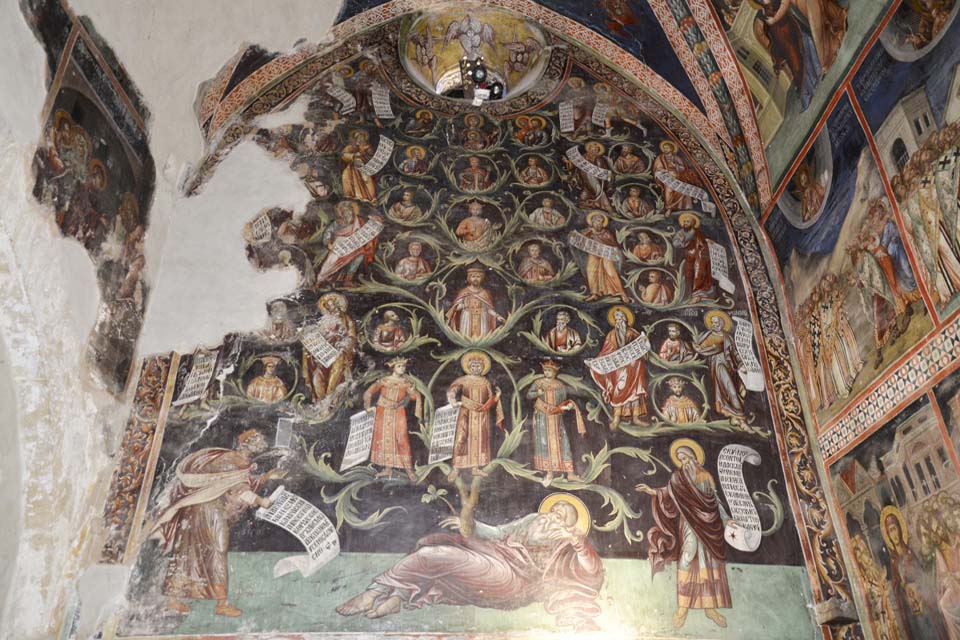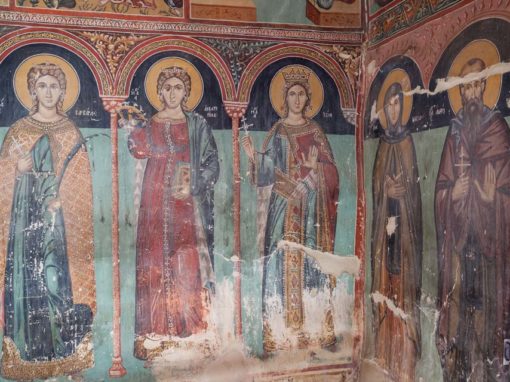The Monastery of Agios Ioannis (St. John) Lambadistis Frescoes
As seen in the decor and frescoes, the monastery flourished during the Byzantine period, as well as during the French Occupation (1191-1489) and the Venetian domination (1489-1571). The frescoes were created in different times, from the 11th to the 16th century and are of different styles. Many icons kept in the monastery are also important to mention, such as Agios Ioannis the Lampadistis of the 14th century, Agios Iraklidios of the 16th century and several others. It is also worth mentioning that the iconostasis of the catholic monastery is the oldest preserved wooden iconostasis in Cyprus. Built in the 13th century, it has beautiful decorations with coats of arms and other designs. During the Ottoman domination (1571-1878), the monastery experienced significant growth, especially in the very difficult conditions of the time. In the 18th century it was reported that 14 monks lived there, it had 4 living areas. It then collapsed and at the beginning of the last century, was abandoned.
Location
Frescoes - Icons
Ikonofyakio (Pictorial)
On the south side of the monastery of Agios Ioannis Lambadistis, there is the ikonofylakio (pictorial), which has heirlooms of the entire community of Kalopanayiotis. Some of the items are invaluable, ancient and unique. All the items have their own si
Miraculous Icon of Our Lady
The icon of Panagia Rodon to Amaranto, which is located in the church, is considered to be miraculous. The image shows Christ and the Virgin Mary wearing crowns on their heads, with the Virgin holding a rose. The village of Kato Koutrafas is located a
Murals of the Agios Sozomenos Church
The church of Agios Sozomenos is located in the centre of the old village of Galata. It was built and frescoed in 1513, with the financial support of fourteen inhabitants of the village. Their names, as well as the professions of some of them, refer to
Murals of the Church of Archangel Michael
The church of Archangel Michael is a wood-chapel church dating from the 16th century and is very close to the church of Panagia Podithou. Of particular interest is the landmark inscribed above the northern entrance where the devotee is pictured with hi













